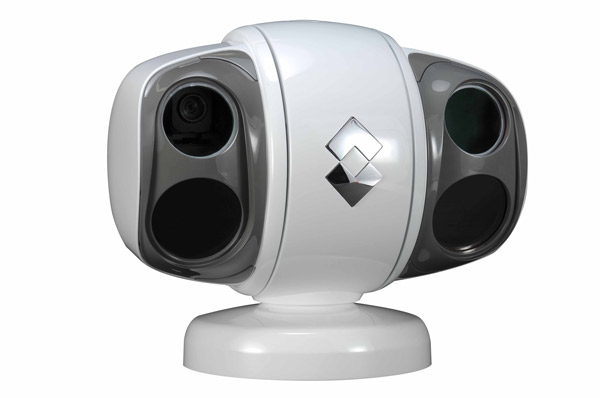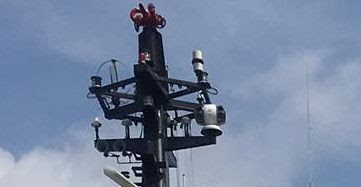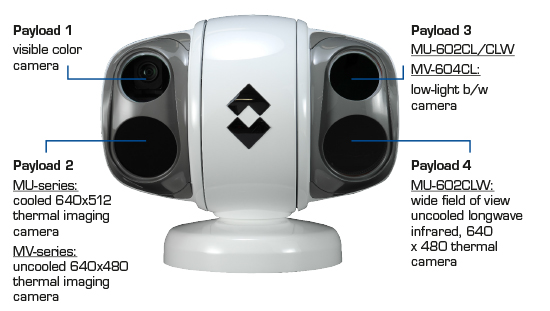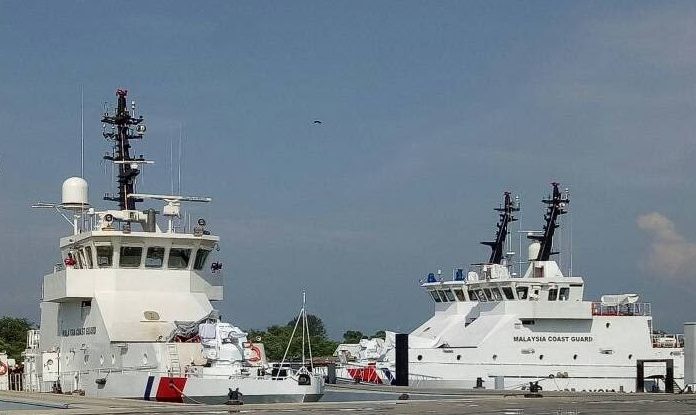
SHAH ALAM: FLIR turret on NGPC. Keen eyed commenter … spotted an electro optical turret on KM Bagan Datuk and the second NGPC, 4542, in the post Second NGPC Under Trials.
He jokingly said it was a Russian one. He later informed me that the EO was actually the FLIR MU-602CLW. I have been trying to confirm the type and make of the EO turret but looking closer at the pictures I think that it is a FLIR MU-series EO turret.

Although the FLIR MU series EO system is a commercial variant it also may need US government approval for export. This may mean that it must be repaired or serviced in a US approved repair facility, like the military-standard FLIR EO turrets. This will mean longer lead time for such tasks.

From FLIR
FLIR MU-Series is the most technologically advanced thermal night vision system available to the maritime industry. This gyro-stabilized, multi-sensor system provides unparalleled long-range performance. The MU-602C includes a cooled midwave, high-resolution 640 x 512 pixel thermal camera with a 14X optical zoom and a eld of view between 28° and 2°. It comes standard with a 550-line color daylight camera with a 28X optical zoom. The MU-602CL adds an additional, low-light black and white camera, while the MU-602CLW includes a fourth camera: an uncooled, long-wave 640 x 480 pixel
thermal camera ideal for short range imaging

The key features of the MU-series
Pan/Tilt enables you to continuously pan 360° and tilt +/- 90°, enhancing situational awareness
Active gyro-stabilization provides steady, long-range imaging — even in rough seas
Radar tracking identifies and tracks specified radar returns, enhancing vessel safety when visibility is low
Video tracking locks on and follows objects as long as they’re in view of camera
Picture-in Picture mode (PIP) displays images from two sensors at once, one full screen and the other as a smaller inset
Digital Detail Enhancement (DDE) assures a crisp thermal image, even in scenes with extreme temperature dynamics

So far the FLIR turret has been installed on Bagan Datuk and 4542. It is likely that it will be standard equipment for the rest of the class. As Destini is also involved in the OPV project, it is likely to be the leading candidate for the EO turret on them.

Bagan Datuk was not equipped with the EO turret when she was at LIMA 2017. It is likely that she was fitted with it after she returned from Langkawi where she was also fitted with the 30mm gun
— Malaysian Defence
If you like this post, buy me an espresso. Paypal Payment

When i looked carefully on the LIMA picture of KM bagan datuk, the FLIR MU is already up there on the mast.
It would be good if EO turrets plus newer solid-state radars could be retrofitted to the TLDMs overworked CB90 boats.
Off topic- if anyone’s interested there is a book on clearance sale at Borders at The Curve. RM10. About 20 copies left.
The Navy and I – Memoirs of a Seafarer by Commander James A S Wong.
…,
Weight could be an issue on the CB90s and there’s also the question of whether the RMN would want to install ”EO turrets plus newer solid-state radars” on the CB90s given that they’re mostly used for personnel transfers, short range patrols in the Spratlys [the various reefs already have radar], etc.
Newer solid state radars for small boats are more compact, and smaller EO turrets coud be used.
This is an example of US Navy’s CB90 (called RCB). The radar is the green cylinder on the center of the wheelhouse roof, while the EO turret is the grey ball beside it.
https://static.dvidshub.net/media/thumbs/photos/1307/963876/1000w_q75.jpg
It would inprove situational awareness during patrols, especially in low light conditions. But as you said, its the navy’s call whether they need them or not.
The traditional problem of mounting sensors on small craft such as FACs and CB90s is the affect of vibration on those sensors. In the case of the CB90s even if radars and EOs are now more compact; internally there is very little space in the troop/passenger compartment and zero space in the wheelhouse] to install the consoles, plus there is the question of adequate power supply from the existing generator.
At the end of the day I suppose it’s what the RMN uses its CB90s for, whether it sees a need for extra sensors in line with roles the CB90s perform and whether it feels the cost to install those sensors are justified. By and large the CB90s are used for personnel transfers from the Spratlys to Labuan, from reef to reef and for close patrols around the reefs. The CB90s came with Simrads and Furuno nav radars; not sure what else has been added over the years.
There was a TV interview with the RMN Chief not too long ago and interestingly there was a model of a NGOPV fitted with RAM and Exocets; showing how the class was intended to be fitted
out :] Why the model was there i anyone’s guess.
AFAIK the kedah class was wired for RAM and exocet. It was said that only 1 day is needed to fit those missiles and they would be immediately operable.
It was always the intention to arm the Kedahs with RAM; it’s apparently integrated with COSYS and there’s just enough space in the ‘B’ to fit RAM. Sure it only takes a say or so to install RAM [plug and play] but how long will it take for RAM to arrive after a rush order and how long will the operators need to learn how to operate it?
Is it me or the ship that looked really weird to the eye? The hull seems unstable
Reply
No, its not just you. It looked like that to meet the manning requirements of MMEA, 22 crew plus berth for another 20 from extra crew; prisoners or survivors. The original design has berth for 12 crew plus three more
irsa – ”Is it me or the ship that looked really weird to the eye?”
It looks top heavy and too cramped. No doubt it’s a big improvement over anything currently operated [unlike RMN ships it’ll have a UAS]
but it’s really hoped that the MMEA won’t have any issues with the class once all are fully operational.
Reply
I am checking up on that one
Maybe it also has to do with the fact that it has to stow and operate a Fulmar UAV.